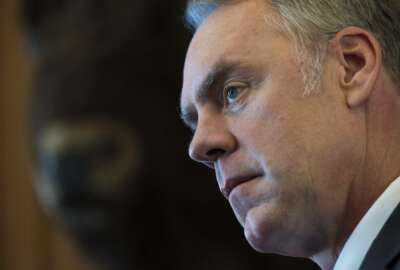
As agencies prep for reorg, OPM to sharpen its succession planning tools
The Office of Personnel Management is preparing a new talent management and succession planning guide.
Agencies have a key reorganization deadline fast approaching on Sept. 30. The Trump administration wants agencies to submit new plans that detail how they’ll measure and manage employee performance.
The Office of Personnel Management is preparing another new piece of guidance that may help: a talent management and succession planning guide designed to help agencies better manage personnel through waves of retiring executives, agency reorganizations or transitions.
The upcoming guidance, which OPM hopes to finish by the end of the calendar year, may come as welcome news to government’s current crop of senior executives.
About 61 percent of departing executives said their agencies had done no formal succession planning before they left the organization, and 56 percent said their agencies didn’t involve them in any preparations to plan for his or her successor, according to OPM’s most recent survey of 212 departing SES between August 2015 and July 2016.
Departing SES in past exit surveys have consistently cited agencies’ struggles to prepare for their top talent to leave.
“Our SES survey results show that we have an opportunity to help retain some of these very high performing SES talent and to empower and enable them to succeed,” Steve Shih, OPM’s deputy associate director for SES and performance management, said in an interview with Federal News Radio.
Yet OPM hopes a new memo will help agencies focus.
“It will help agencies conduct regular workforce analysis, develop talent depth through rotational assignments and training and development, that way employees are prepared to take on new and different assignments and roles,” Shih said. “It’ll help agencies develop plans for succession in hiring, so agencies will also be prepared to have staff take on the responsibilities of departing employees.”
The upcoming memo is one of several OPM has published in recent months. Nearly all of them focus or mention best practices for employee engagement.
Specifically, OPM sees “employee engagement plus” as the key to a successful partnership between leadership and their employees — one where employees are continuously talking about what’s working, what isn’t and the data to support those conclusions.
“The philosophy of performance management plus is based on our research, our experience and our benchmarking that have demonstrated that organizations can best excellence in performance not through systems or procedures, but rather by empowering their employees,” Shih said. “It’s the people, not the process.”
Shih said the concept is particularly important for career senior executives, who are responsible for both leading an organization’s transformation and leading their fellow colleagues to maintain operations and services during a major change.
It’s also relevant any time — in the middle of an administration and during a presidential transition or agency reorganization, he said.
“Just in some informal discussions with agency leaders, these are the common areas, priorities and approaches that we’ve been talking about for many years,” he said. “It’s not necessarily new. Research and our experience demonstrates the importance of employee engagement on good performance management practices, which are more than just having supervisors and employees talk about performance two or three times a year.”
Instead, OPM wants agency leaders to have candid discussions regularly with their employees about their expectations — and based on objective data.
Shih acknowledged that ideas might seem like common sense. But the data shows otherwise.
Retiring senior executives who left their agencies last year said more retention incentives or a simple verbal encouragement from a supervisor may have persuaded them to stay longer.
And 71 percent of executives said their agencies made little effort to encourage them to stay, even though a fraction of departing SESers indicated they may have remained in government if given a better or different opportunity.
Shih said the ultimate goal is for agencies to integrate these ideas into their practices holistically. These conversations shouldn’t be “one-offs” or a stand-alone activity, he said.
Yet OPM believes writing and issuing these memos sends a message to individual agencies: that the highest leaders in the administration are “clearly and emphatically” committed to employee engagement and performance management.
“From there, what we need to do is to ensure that we’re doing a good job preparing, developing and then hiring real leaders into leadership positions,” Shih said. “If we do that, individuals will have performance management and other employee support focuses built into their personality and their makeup. It will be naturally important to them.”
Copyright © 2024 Federal News Network. All rights reserved. This website is not intended for users located within the European Economic Area.
Nicole Ogrysko is a reporter for Federal News Network focusing on the federal workforce and federal pay and benefits.
Follow @nogryskoWFED





